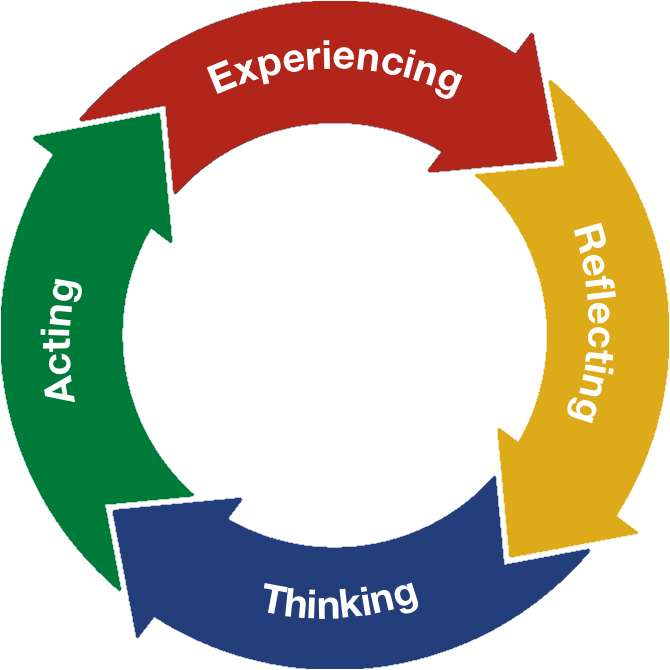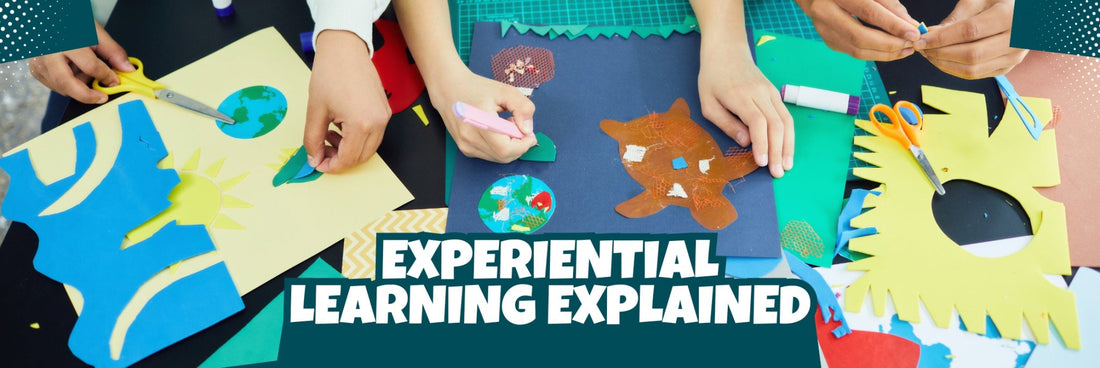As parents, we always look for ways to help our children grow and develop. And one of the best ways to do that is through hands-on enrichment activities. These kinds of experiences grab kids' attention and get them fully involved mentally and physically. And the best part? They come with a whole bunch of benefits for children of all ages.
Hands-on enrichment sparks kids’ curiosity, fires up their creativity, sharpens their problem-solving skills, and gives them a big boost of confidence. How do we know? Let’s discuss the theory of Experiential Learning.
The Kolb Experiential Learning Theory
Experiential learning, sometimes called hands-on learning, recognizes that people often learn best through experiences. This philosophy is described in the Kolb Experiential Learning Theory, developed by David A. Kolb, who is recognized as a pioneer of this learning framework.
According to Kolb, the ideal learning process can be divided into four steps: experiencing, reflecting, thinking, and acting.

This philosophy centers the learner’s experience and emphasizes learning by doing. When action is prioritized, students engage with the material more deeply and apply theoretical concepts in practical settings. Whether through hands-on projects, simulations, field trips, or internships, experiential learning fosters critical thinking, problem-solving, and collaboration.
By immersing students in authentic tasks and challenges, this approach enhances their understanding and retention of information and helps them develop valuable life skills, preparing them for future academic and career success.
6 Benefits of Experiential Learning
Experiential learning's hands-on approach makes education more engaging and enjoyable, deeply ingraining knowledge and skills. By connecting theory with practice, it prepares students to tackle real-life challenges with confidence and competence. Let's explore the many benefits of this approach and how it can greatly enhance the educational journey.
1. Encourages Active Learning
Hands-on activities are a cornerstone of active learning, providing children dynamic opportunities to engage with educational content. Children absorb the curriculum more effectively when they participate in interactive experiences.
Kids engaging in active learning are 1.5 times more likely to succeed in the classroom. By immersing themselves in hands-on tasks, children have the freedom to explore, experiment, and discover at their own pace. This active engagement enhances comprehension and promotes critical thinking skills and long-term knowledge retention.
Through experiential learning, children develop a sense of ownership over their learning journey, leading to greater confidence and academic achievement.
2. Cultivates Resilience
When children engage in hands-on experiences, they encounter challenges and obstacles that require perseverance and problem-solving skills. Whether building a structure with blocks, completing a challenging puzzle, or troubleshooting a science experiment, children learn to embrace setbacks as opportunities for growth rather than failures.
By navigating through these challenges, children develop resilience, grit, and determination, essential qualities for navigating life's ups and downs with confidence and resilience. Students have the chance to fix any mistakes in their learning right away, with expert help close by. These experiences give students more reference points, making remembering what they've learned easier.
3. Sparks Creativity
Engaging in hands-on activities sparks children's curiosity and expands their horizons. Whether kids are involved in arts and crafts, solving puzzles, or tackling STEM projects, these hands-on experiences ignite their curiosity and push them to think beyond the confines of the task.
Creativity is the “secret sauce” to STEM activities. By providing an outlet for self-expression and exploration, these activities encourage children to experiment, take risks, and embrace their unique ideas. By offering children an outlet for self-expression and exploration, these activities inspire them to think outside the box, take risks, and embrace their ideas and perspectives.
4. Boosts Self-Confidence
Experiential learning captures children's attention in ways that traditional teaching methods like lectures and worksheets cannot. When children engage directly with tasks or challenges, they learn that there isn't just one correct answer. This hands-on approach also helps them understand that experiencing setbacks or failures is a normal part of the learning process and doesn't mean they can't succeed in a subject.
Whether working independently or collaboratively in teams to overcome obstacles, children sharpen their problem-solving abilities and build confidence in their capabilities.
This newfound confidence extends beyond the activity, empowering children to tackle challenges in various aspects of their lives. With confidence in their problem-solving abilities, children are empowered to tackle challenges confidently, whether academic, social, or personal.
5. Fosters Social & Emotional Skills
Experiential learning stimulates academic growth and plays a pivotal role in fostering social interaction and emotional development in children. When children engage in collaborative projects with their peers, they learn necessary social skills like sharing, effective communication, and teamwork. These interactions help them understand the value of cooperation and compromise, which are essential for building healthy relationships.
Working with others, children naturally develop empathy and compassion as they learn to appreciate the perspectives and feelings of their peers. These skills are essential for fostering positive social dynamics and nurturing meaningful connections as children progress through various stages of development.
6. Introduces Real-World Context
Experiential Learning activities are invaluable in mimicking real-world contexts for children. By engaging in tasks that require the practical application of knowledge and skills, children learn to navigate scenarios similar to those they will encounter in adulthood.
Instead of facing the risk of errors in professional settings, students can explore new ideas and satisfy their curiosity at their own pace. This approach helps them build critical thinking skills and apply what they've learned in their training. Humans naturally learn by trying things out and learning from mistakes.
With each cycle, students grow more skilled at tackling challenges confidently. In simple terms, practice makes perfect!
Don’t Be Afraid to Use Your Hands!
By engaging in various hands-on enrichment activities, children enhance their academic knowledge and develop essential social and emotional competencies crucial for success in today's world.
At Brains & Motion Education, we recognize every child's innate curiosity and drive to explore and understand the world around them through hands-on experiences. Our Summer Camps are meticulously crafted to provide children with immersive project-based learning opportunities, fostering their creativity, critical thinking, and problem-solving skills.
From coding and robotics to creative writing and STEM projects, our camps offer diverse experiences tailored to ignite curiosity and inspire lifelong learning. Take advantage of this incredible opportunity to empower your child's growth and development. Sign up for BAM! Summer Camps for boundless possibilities!

